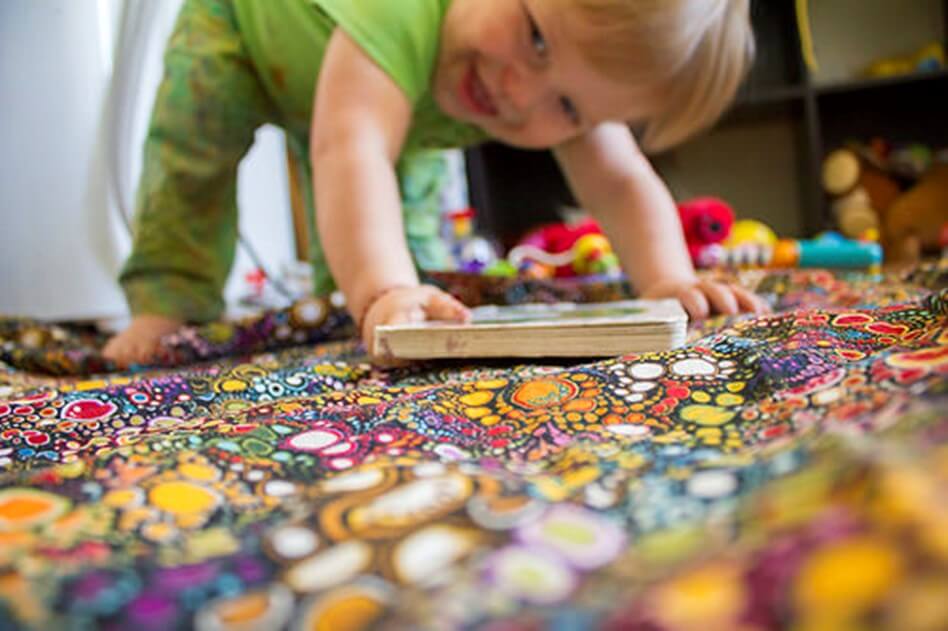How to Foster Imagination and Creativity in Children

Creativity is underpinned by the ability to use our imaginations, inventiveness, resourcefulness and vision. It can often seem like creativity is an inborn characteristic that some people are blessed with, while others struggle with any sort of creative vision. But creativity is much more than inventing or art or a certain ability. Some children seem to naturally get lost in the wonder of their imaginations, others need prompting. Whatever your child’s talents and abilities, there are many ways you can encourage their creativity. Here are ten ideas that you can get started with:
1) Limit time spent using electronics
Keep TV and computer games to a minimum. Some television programs help us to learn more about the world, and can be really enjoyable to watch and discuss as a family. But watching TV for several hours per day is not a healthy habit. This is because it encourages children to zone out and stop thinking for themselves. Taking part in regular outdoor activity is more beneficial for a child’s physical development and prevents them from being at risk of obesity.
2) Display their artwork
Children are very proud of the pieces of artwork that they award to parents and other relatives. Show that you value their creative efforts by hanging their drawings and paintings in your home. You could even frame the pieces that your children are most proud of and display them prominently for all your visitors to appreciate.
3) Energise imaginative play
There’s nothing that kids love more than playing pretend. Stock up on props and fancy dress costumes. You should store the fancy dress items in a large chest or trunk that’s made just for that purpose and enables them to be swept away by their imaginations as soon as they open it. Use charity shops, car boot sales and seasonal sales to stock up.

4) Read to your children regularly
Read to young children on a regular basis, until they’re old enough to want to read chapter books on their own. Make the moment feel enchanted by dimming the lights and getting snuggled up with lots of pillows and blankets. If your children have a favourite story that they ask to hear over and over, you should encourage your children to draw the characters and scenes as they envision them.
5) Encourage them to tell stories
You don’t need a beautifully illustrated book or a video to appeal to your children’s imaginations. When parents and children take turns telling their own stories it helps them to form a strong connection and boosts children’s creative development. Storytelling can be done anywhere. Try it during a walk through your local park. You could turn all the things in the surrounding area in to exciting characters in the story.
6) Make art
Provide your children with plenty of varied opportunities to embrace their creative side. Make sure you have the necessary supplies for them to paint, sculpt, draw, mould and build. Giving children free rein over their work is very important. These tactile experiences will help them to think innovatively in a range of ways.

7) Use natural materials
Using natural or generic materials keeps children connected to the natural world and reminds them of its capabilities. Elements of nature can really inspire the imagination – as can open ended toys like building blocks or sandpits, which offer endless possibilities.
8) Big Box
Toys don’t always have to be shop-bought, and often, they’re more exciting when children have helped to make them. Find an extra-large cardboard box and set it up in an open area of your home. Allow your child to turn it in to anything they want. It could be a house, a cave, a fire engine, a racing car or even a time capsule. Help them to cut out some windows and allow them to decorate the box using paints, pens, crayons and craft supplies.
Whether these activities are enjoyed independently or together, they’ll have your child’s imagination running wild. Engaging in imaginative play can do a lot to boost the cognitive functioning of young and inquisitive minds, making it the best use of children’s leisure time. Here at Garden Play, there’s nothing that excites us more than seeing children becoming creative and resourceful enough to put their own ideas in to motion.
